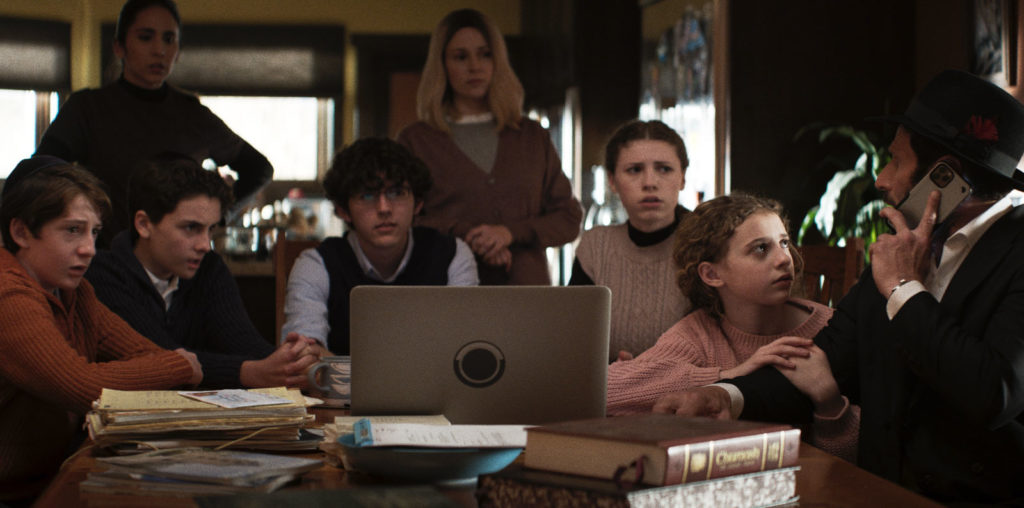
The state of animation has become nothing short of dismal, with a glut of visually hideous CGI endeavors full of cutesy animals or ridiculous anthropomorphic inanimate objects (do we really need movies about talking cars or talking baseball bats?). Even Japanese anime has become predictable and stale. For anyone who genuinely loves animation, it often feels as if the genre is achieving a glut of quantity and a serious deficit in quality.
Well, there appears to be salvation – from the unlikeliest of places. Independent filmmaker Ladd P. Ehlinger Jr., working out of Hunstville, Alabama, has created an animated feature that is literally something of a throwback: in this case, a throwback to the glory days of “Yellow Submarine,” “Fritz the Cat,” “Fantastic Planet,” “Wizards,” “Allegro Non Troppo,” and “Heavy Metal.” With a visual style that is thoroughly unique and a personality that shoulders themes and concepts without contemporary precedent in this genre, Ehlinger has created a work of art that could be dubbed (with no risk of hyperbole) as a new animation masterpiece.
Ehlinger’s film is “Flatland,” based on the prescient 1884 sci-fi novella by Edwin Abbott. For starters, Abbott’s text could easily be considered one of the least likely candidates for cinema adaptation: a bizarre but witty mediation of a parallel universe made up of two-dimensional geometric objects. The hero is a square (literally) who discovers a pair of equally unlikely universes: a one-dimensional world of lines and a three-dimensional universe that literally brings new depth to the square’s appreciation of life. Abbott’s mathematical flights of fancy were considered a thinly-veiled satire of Victorian England’s rigid society, with plenty of veiled digs at class and gender discrimination. Yet his satire is dated by contemporary standards and his mania for mathematics is clearly at odds for today’s society (which, on the whole, doesn’t seem able to balance a checkbook, let alone comprehend theories of spatial dimensions).
For the film version of “Flatland,” Ehlinger has kept much of Abbott’s concept while updating the story to meet the needs of modern times. Some touches are extremely contemporary, particularly the subplot of a megalomaniac president who conspires to wage a war against a non-threatening country based on the flimsiest of pretexts (sound familiar?).
In “Flatland,” the square hero is a lawyer known as A Square, who lives in the territory of Flatland. It is a rigid environment of two-dimensional geometric beings who flow back and forth much in the manner of the old Pac-Man character. They’ve also adapted to the lack of depth in the world – for example, since they cannot physically turn around, they simply flip themselves upside down and proceed in the opposite direction.
Flatland is a rigid place where individuality is not welcomed and everyone knows their place. The lowest members of the male social structure are triangles, who make up the armed forces and correctional officer ranks. Circles run the political structure. Children born as irregular shapes are put through a “reconfiguration” process so they can become clearly identifiable geometric objects. This involves a practice involving a large tool that resembles an oversized nutcracker – it is always painful and not always successful, and the dead children are literally disposed of.
Women have no shape – they are lines who need to warble a “peace cry” as they travel because the male geometric shapes cannot see them as anything but a point. As straight lines, women have been known to stab the unsuspecting male geometric shapes who didn’t see them coming (at one part of the film, a vengeful female’s fatally piercing wrath is greeted by the male cry: “Look out, it’s a woman!”).
All of the citizens in Flatland must have white exteriors; having a non-white exterior, known as “chromatism,” is outlawed by the aforementioned mad president as sedition. His anger at chromatism is so great that he orders the assassination of the Senate’s lone irregular-shaped and hued legislator. The president then beats the drumbeat for the aforementioned war against a neighboring territory where chromatism is allowed.
The social upheaval is bad enough for A Square, as his brother (a political operative called B Square) is caught up in the political turmoil and locked in prison under presidential orders. During this time, though, A Square unexpectedly finds himself challenged by equally disturbing concepts of unknown worlds beyond Flatland. A dream takes him to Lineland, where he unsuccessfully debates the Line King on the possibility of life beyond the monarch’s one-dimensional domain (in a rich touch, the Line King has two voices, one at each end of his glowing line).
A Square then gets the ride of his life thanks to the unexpected visit of A Sphere, a fully three-dimensional circle who arrives from the hitherto-unknown Spaceland.
At this point, I hesitate to provide more details of “Flatland” because it would ruin the surprising twists and turns of this wildly original presentation. I can say that A Square’s new-found appreciation of spatial dimensions takes him further than one might expect.
What can be stated here is the bold originality and vibrant intelligence that makes “Flatland” a rich cinematic experience. Ehlinger’s animation flows brilliantly through realms of multiple dimensions, from the eerie monochrome of Lineland to the wonderfully garish 3-D madness of Spaceland to another previously unconsidered environment that challenges the landscape in the psychedelic trip of “2001: A Space Odyssey” for sheer audacity in the wrap of color and sound.
Unlike Hollywood’s animation, there is nothing coy or fey in “Flatland.” Sequences throb with raw power, provoking visceral emotional responses from the often disturbing imagery (the triangle soldiers hacking the irregular senator to death in a piece-by-piece manner, the quiet horror of the unfurnished jail cell where A Square’s imprisoned brother monotonously flows back and forth, A Square losing his life as gravity conspires against him in Spaceland).
Yet the film is anything but grim. Flippant intertitles keep the viewer abreast of points of interest that need to be remembered for a later section of the film. And the subplot of A Square’s noisy family life, particularly his five raucous pentagonal children and a sixth child, who a sulking rebel who turned out a hexagon following the reconfiguration process to smooth a birth irregularity, provide for winning domestic comedy.
Clearly this is not “Happy Feet” or “Cars.” For a film that raises questions of racism, class inequality, political manipulation and the blunt challenge to long-accepted scientific values, “Flatland” packs endless intellectual punches. This film is not for little kids, though brainy adolescents will easily respond to its striking animation and its authority-challenging undercurrents. Adults in search of something genuinely different will be floored by Ehlinger’s amazing vision and endlessly compelling talents.
“Flatland” is a work of genius, and animation has a new force of power in Ehlinger.


As a longtime fan of the book “Flatland”, I am looking for an effective way to communicate the message of the book to my high-school sophomore Geometry classes. I usually just relate the gist of the story to them– to get them to consider the existence of the 4th dimension (and higher!)– and they usually respond positively to this. Though I adore the book, I feel that the language (and some of the social issues presented) are too archaic for today’s youth audience.
Now that I’ve discovered that there are not one, but two, new videos of Flatland, I think I’ll try this one. Thank you for your review.